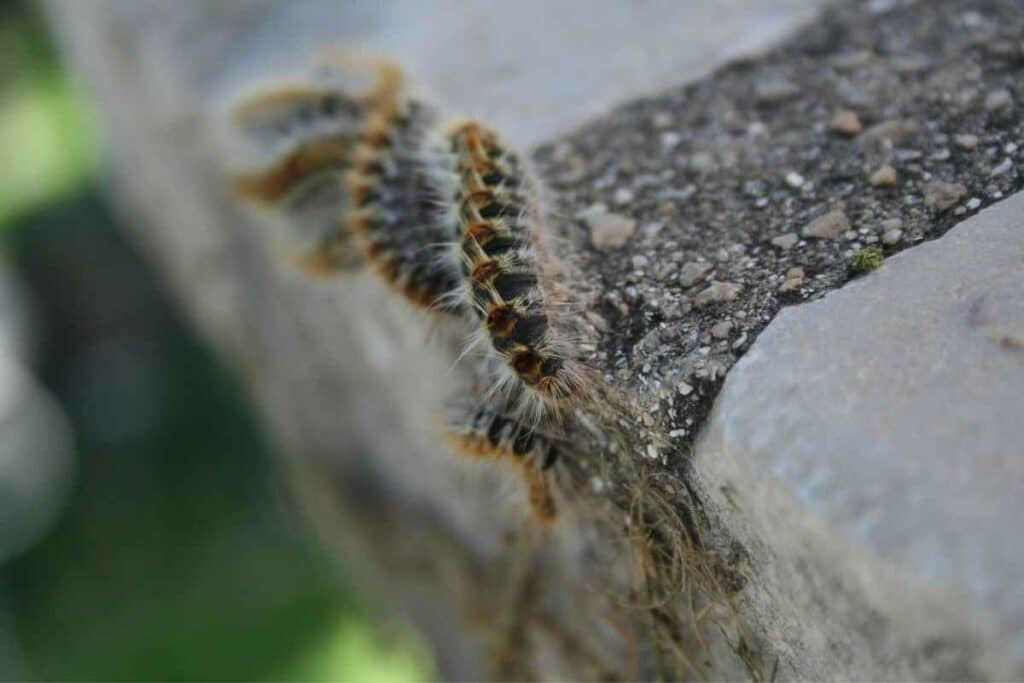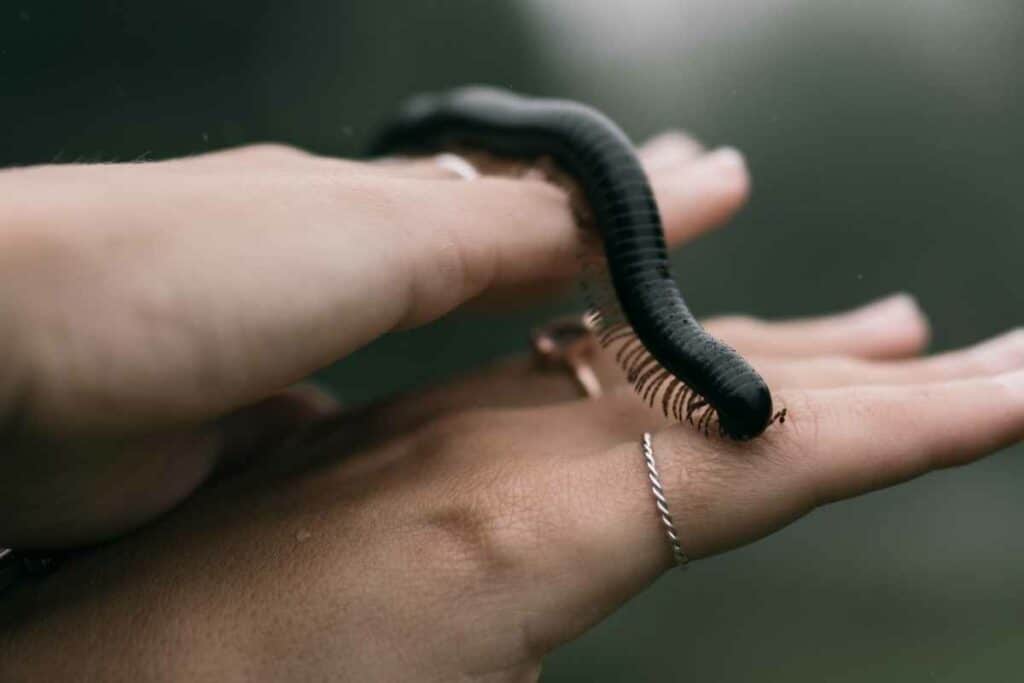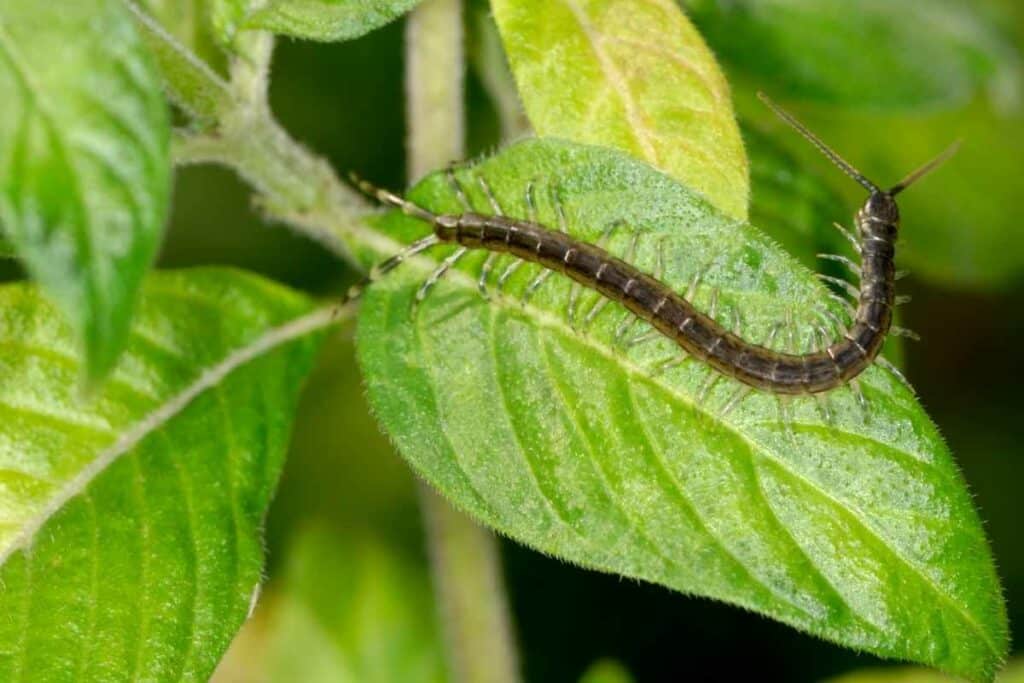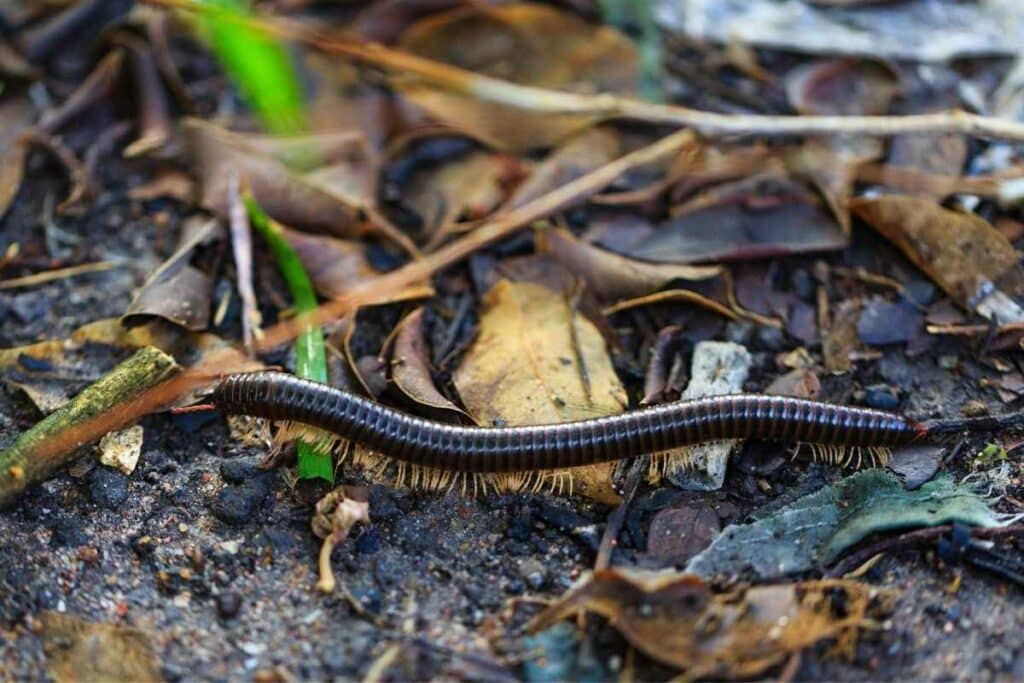When you think of a centipede, the image of a creepy crawly with one hundred feet arranged in neat rows instantly springs to mind.
The strangest thing is that despite the name centipede coming from the Latin centum meaning hundred, these arthropods can have anywhere between 10 and 300 feet to walk around on! In fact the name centipede simply means many-footed (centipeda).
Centipedes are fascinating creatures, but if they are turning up in your garden you may need to be careful because they can have a nasty bite.
In This Article: We will get to the bottom of why these creatures have so many legs and the role they play in a healthy garden.
So Why Do Centipedes Have so Many Legs?
The numerous legs are the most distinctive feature of these arthropods which are from the myriapoda family that includes millipedes and pauropoda.
Their need for a multitude of legs is down to the fact that they are metameric creatures – organisms that have multiple similar body segments, largely arranged in a linear manner.

For the centipede to be able to get around, each of its body segments needs a pair of legs with the numbers of legs directly tied to the number of segments a particular species of centipede possesses.
With most centipedes having at least 15 body segments, the number of limbs soon add up!
As the centipede grows in a series of moults they develop an increasing number of body segments and of course, pairs of legs.
You can even use the leg paired to estimate the age of centipedes which can be surprisingly long-lived.
Less-known Fact: Each pair of centipede legs are longer than the pair in front. This enables the centipede to crawl without the legs overlapping. In fact, the last pair of legs is often twice the length of the first pair on the centipede body.
And Having so Many Legs to Hand, Is Helpful If a Centipede Becomes Injured or Predated
If a centipede loses limbs they can regrow them quickly.
Their regeneration abilities do not extend to their central body parts or whole body segments.
Are You Encountering Centipedes in Your Garden?
With over 8000 centipede species distributed across the world, it is more than likely that you will encounter them in your backyard.
These creatures love moist, damp environments where they can avoid dehydration, as they do not have the waterproof cuticle possessed by most insects and spiders.
Therefore you are most likely to find them lurking under stones, the cracks of logs or piles of moist leaf litter.
In the daytime, they will hide out in these locations so you are likely to find them if you disturb dark and damp locations in your garden.
Centipedes also appreciate the warmth a greenhouse can provide, with certain species of centipede specifically living in glasshouses or polytunnels.
Are Centipedes a Pest?
If you have found that you have many centipedes in your garden, you may be concerned about them affecting your plants.

Thankfully centipedes are a sign of a healthy garden and are not plant pests.
These creatures are voracious carnivores and will give you a helping hand by feeding on slugs, wireworms and other soil organisms.
Even in homes, these active hunters will kill unwelcome pests like:
- silverfish
- cockroaches
- small spiders
- moths
- woodlice
They are efficient invertebrate predators, using their antennae to hunt their prey.
Their front two legs are hollow and adapted with claws to grasp, bite and inject venom into.
Did You Know: They are equipped with strong mouthparts which can clamp down on and suck the juices of their prey down their simple digestive tract.
Millipedes Are the More Likely Culprit If Your Plants Are Getting Nibbled
If you see a multi-legged creature raiding your tender shoots or soft fruits it is much more likely to be a millipede which will target seedlings, cucumbers, peas and tomatoes.
Spot the Difference Between Multi-legged Centipedes and Millipedes!
Though they are both multi-legged arthropods, telling centipedes and millipedes apart is simple.
In temperate climates like the UK, centipedes are light brown or chestnut brown.
Millipedes tend to be more browny grey and will move slowly or curl up when touched.

Centipedes, on the other hand, are fast movers and will get away quickly when exposed.
Millipedes also have 2 pairs of legs per body segment, compared to one pair for centipedes.
Though Centipedes Are Largely Beneficial Garden Residents, You Need to Beware of Their Nasty Bite!
No one wants to be on the end of a centipede.
These creatures are venous and their adapted front limbs known as toxicognaths (poison claws) are more than able to give a nasty bite to humans that create puncture wounds or blisters.
Centipede bites are problematic because they inject venom into the wound.
Thankfully this is unlikely to be fatal to an adult human, but a centipede bite can make young children quite unwell.
Symptoms usually resolve after 24 hours but may be prolonged in individuals who are more sensitive or if the centipede is very large.
Centipede bites cause:
- Severe pain
- Swelling
- Redness around the bite
- Raised heart rate and chest discomfort
- Nausea and vomiting
- Headache
Because of the Risks of Bites, You May Want to Keep the Numbers of Centipedes in Your Garden Down
Gardeners bear the brunt of bites from these creepy crawlies.
Stopping centipedes from proliferating in your garden or greenhouse will certainly reduce the risk that you are on the end of one!

You can easily make your garden inhospitable to centipedes by simply removing the damp and dark places they love to thrive in.
Tackling neglected compost heaps, stones, mulch and piles of leaves will reduce the presence of centipedes in your garden, without having to reach for chemicals.
Rounding up
These leggy invertebrates are going to show up in a thriving garden with lots of insects and plant life.
Unless you are being overwhelmed by them, there is little need to disturb them as they only bite when handled or disturbed.
Also Read
- Do Baby Squirrels Drink Water?
- Are Dragonflies Good for the Garden? (Pros and Cons)
- Do Praying Mantises Fly?
